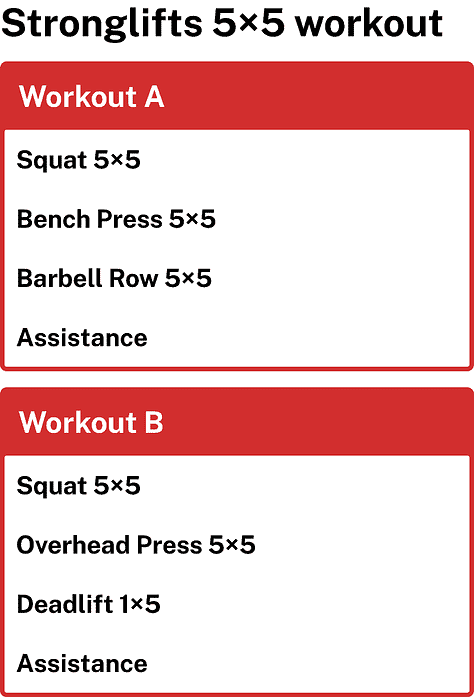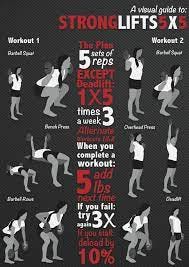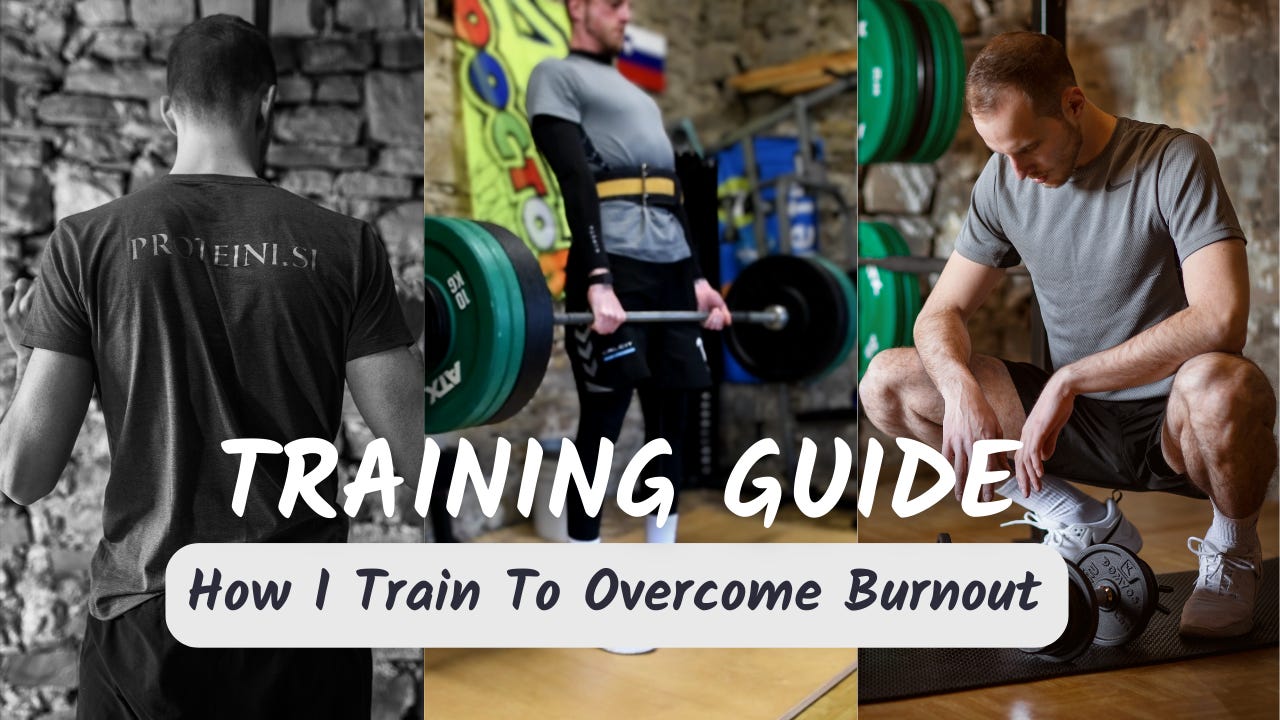How I Train To Conquer Burnout
Complete guide on how to train and work out to overcome burnout
If you like my content, feel free to click the ❤️ or 🔄 button on this post so more people can discover it on Substack.😊
In this newsletter, I delve into the world of overcoming burnout and share valuable insights on how fitness and strength training can make a significant impact.
In this guide, take you through my training routine and reveal practical tips to incorporate into your own workouts for combating burnout.
I also made a training vlog video of how I train to conquer burnout, you can check it out below:
Effects of Burnout on Physical Fitness
One of the most challenging consequences that burnout can cause us is the loss of physical fitness, strength, and endurance.
The fitness loss that burnout causes cannot be compared to a simple sickness-related loss.
In the beginning, burnout puts us in bed for a certain time period — maybe for a few days or a few weeks— but the toll on our physical body and fitness is often greater than we believe and imagine.
What makes burnout a challenging and tough condition are not just physical problems, but physical problems combined with mental and emotional ones.
Physical symptoms and problems negatively affect our mental, emotional, and spiritual health, which further worsens our own general health.
After that initial burnout, it usually takes a few weeks or months — depending on the intensity of the burnout — to fully recover and overcome it.
I can speak from my own experience: after each small burnout episode, I felt like I’d lost all my fitness. Going back to the gym, I felt like I had to start from square 1.
Physical Recovery After Burnout
The process of physical recovery is very challenging, for multiple reasons.
First, because of burnout our energy levels, motivation, and drive are very low, so we automatically don’t feel like training and working out. We have to use a lot of willpower to push through that resistance and to make that mental override to go and work out, which can consume a lot of energy and further diminish our energy stores.
Secondly, due to burnout our ability to recover and regenerate after physical activity is diminished and limited. Because of that, we have to pay attention to how intensively and how frequently we exercise, work out, and train: if we train too hard or too frequently, our body won’t be able to recover fully and we might end up falling into that burnout state once again.
The third reason is mental and emotional. Because at the beginning we don’t know the burnout condition, we experience a lot of fear and anxiety if we’ll ever recover and be fully healthy again. There’s also the fear and anxiety of how much we can exercise, train and push ourselves to become stronger but not too much so we don’t burn out. We might also lose hope and trust in ourselves, our body, our mind, and the power that we hold in ourselves to heal.
Our mind and emotions are very powerful tools and if they work against us, and if they work against us, they make our burnout condition and our ability to recover worse.
These factors make the process of regaining fitness after burnout very difficult and challenging.
How to train and work out to overcome burnout
Since I first burned out in late 2017, I’ve experimented a lot with my training: I’ve tried a lot of different styles and types of training and learned a lot.
Here is the complete guide on how to train and work out to overcome burnout and some tips that you can incorporate in your training to either prevent burnout or overcome it.
1. Don't stop working out and training
The biggest mistake I made after I first burned out, was to quit training and working out completely.
In that period I was so exhausted that I thought I needed to give my body complete rest so it could heal, so I stopped playing volleyball and give up training and working out altogether.
But life and stress were continuing on and were further damaging my health.
Because I was under too much bad chronic stress and not enough good, hormetic stress, over time my body became weaker and weaker, my overall health declined and I had even more problems than before.
Later on, when I started working out and training again, it was so difficult to get back in shape because I was so weak and it took me a huge amount of time to be able to get back into the routine of regular training and working out.
So my no.1 advice If you suffer your burnout is to not stop training and working out, just change it and adjust it by following this guide and tips right here.
2. Strength-based training
To reach our goal to overcome and recover from burnout, we must make our body stronger: as our body will be getting stronger, we will be able to better handle life and conquer the burnout.
In my opinion, the best way to build strength is with weights in the gym. There are many ways how to train, but when it comes to burnout, strength-based training is the best way.
Strength-based training makes the body stronger and it doesn’t include as much volume so it’s not as burdening on the body’s central nervous system (CNS), which prevents taxing the adrenal too much and so avoids burnout.
Strength-based means training with lower reps, and higher weights. Sets should be short and explosive, followed by longer rest in between sets.
There are many programs out there: back when I first started training again, I used the program called StrongLifts 5x5 which also comes in an app.



The program is very simple and basic and thus ideal for someone starting to work out or regaining their strength. It consists of two different workouts of main compound lifts: squat, bench press, deadlifts, barbell rows, and overhead press divided into 2 workouts. You do 5 sets of 5 reps for each excise and every time you train you increase the weight a bit, which is called progressive overload which will over time make you stronger and help you overcome burnout.
I found great success in gaining strength and improving my burnout, so I would highly recommend it if you’re looking for a simple and effective strength-based gym program.
Currently, I’m using the Juggernaut powerlifting program: I’ve been training with it since December of last year and I’m loving it: I have seen my strength on all the main 3 lifts (squats, bench presses, and deadlifts) increase and I can feel stronger which transfers to the life in general.
3. Control your heart rate in-between sets
One thing that I like to do between sets while resting, is to bring my heart rate (HR) down,
Neuroscientist Andrew Huberman talks a lot about that: It’s a biofeedback exercise that helps us learn how to control our HR and at the same time, how to limit the stimulus to the CNS and improve our recovery.
You can control your HR and bring it down by focusing on your breath and pulse by using a tracking device: by taking a few deep, belly breaths, you can start to bring your HR down.
After doing a set of exercise, my HR is usually in the 120s or 130s, so in-between sets and during rest periods I try to bring it down to the 80s.
Doing this for most of my rest periods, I’ve seen improvement in my recovery and how much training “negatively” impacts me.
4. Don't superset
To lower the burdening the CNS too much, I avoid super setting exercises - doing two or more different exercises at a time, one after another.
When I do main compound exercises, I don’t super set because these exercises involve all the muscles of the body and are therefore more taxing on the body.
If I do super set, I do it at the end with accessory exercises and movements since they’re not as heavy and I can also save some time.
5. Do cardio separately
Another thing that I think it’s important is to separate strength-based training and cardio.
Cardio and strength-based training trigger different systems in the body and it can be quite a burden and taxing on the body and CNS if we combine them and do them together. and that’s why separate the two.
I usually do 2 strength-based trainings a week and on the other days, I try to get some cardio in: primarily with walking, going on a run, or working around the house.
6. Don't overdo it
The heavier we train and work out and the more we push past the fatigue and resistance of the body, the harder it will be for our bodies to recover.
You have to keep in mind where your limits are and make sure you don't cross them: If we push too much, too long, too often, or past our limits, that will negatively impact our recovery, and our bodies won’t be able to recover properly, and our burnout will get worse.
As Greg McKeown, a famous author reminds us:
“Do not do more today than you can completely recover from by tomorrow.”
Not going past your limits will ensure that you don't slip into burnout and it will help you recover from your burnout.
7. Know when to push through and when to take a step back and rest
With burnout, sometimes it’s very hard to know whether the fatigue and resistance that we feel is “real” or not.
It’s hard to know if the fatigue that you feel is coming from the mind and is a product of the Resistance, fear, anxiety, or trauma that burnout left.
That’s why it’s important to get in touch with your body to feel and know the difference between the two: between the real fatigue and between Resistance when it’s okay and right to push through the mental and physical resistance, and when to take a step back.
The answer can be found in the body by listening to it and noticing the whispers and signals that it’s sending.
Two resources if you want to learn more about how to know the right answer:
Know When To Go Hard And When Soft
When to push through the fatigue and when to rest?
8. Focus on recovery
The key that a lot of people miss is that when it comes to progress, working out more or harder is not the key - the key is to recover better.
Recovery is the thing that will enable us to adapt to the stimulus that we’ve been put under with weights which will ultimately enable us to become stronger.
Also If you suffer from burnout, you might find that your recovery is slower and compromised: that’s why you should incorporate some activities that will help your body recover faster.
These recovery activities and tools include
food and supplements before, between, and after workouts,
yoga, stretching, foam rolling,
meditation to switch from sympathetic to parasympathetic mode,
cold exposure, sauna,
massage,
floatation, etc.
Remember: your progress is only as good as you’re recovery is.
9. Be patient and committed
If you suffer from burnout, you have to be patient: burnout cannot be conquered in a day or in a week.
We should be consistent, make a plan, trust the process, and believe in ourselves and our bodies!
As our body will be getting stronger, we will be able to better handle life in general and its demands.
What about you? Do you struggle with training and burnout? What are some of the training strategies that help you the most in conquering burnout?
Let me know in the comment below! 😊






